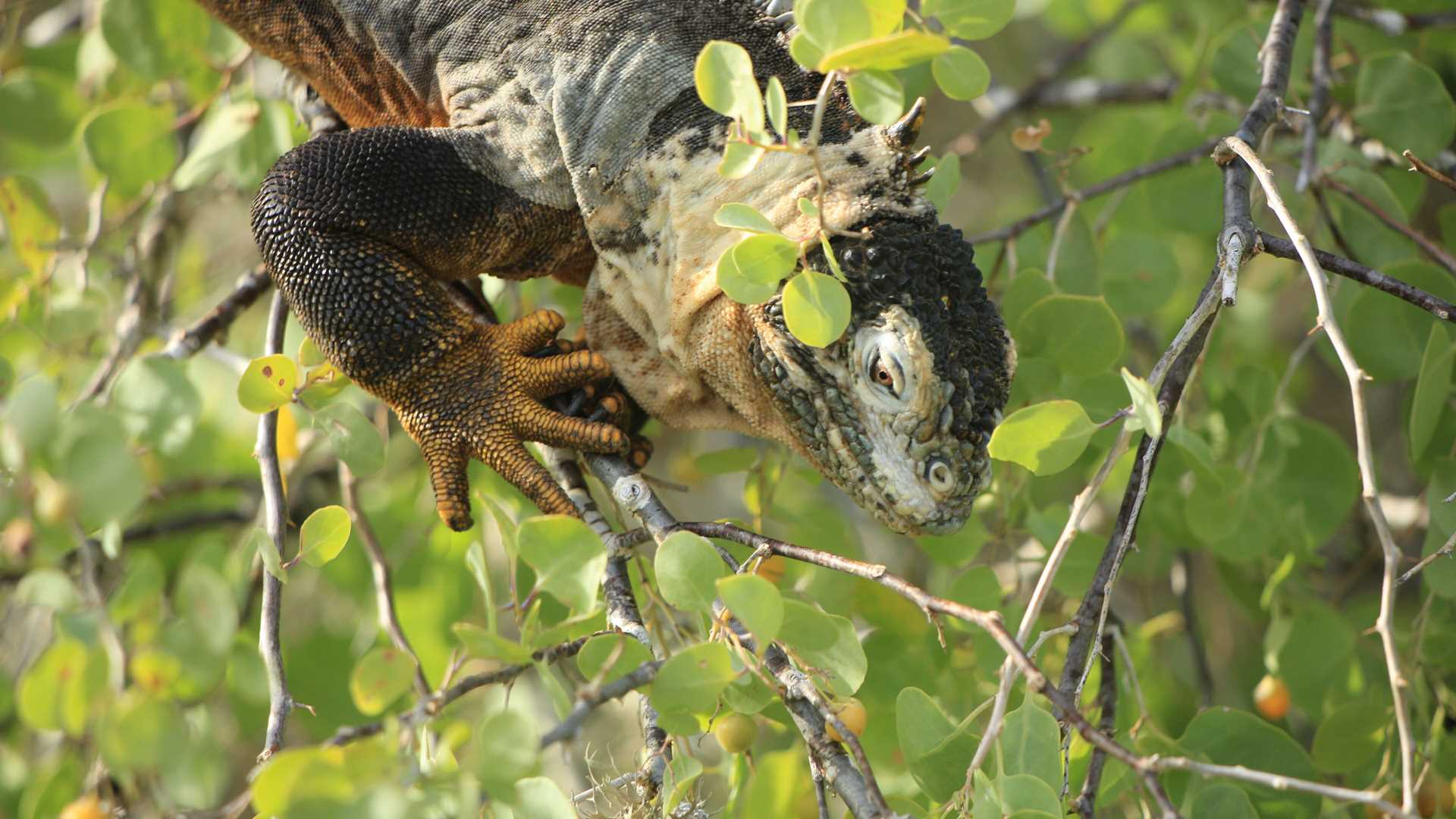Today we awoke anchored on the eastern side of Santa Cruz Island, right near two uplifted islands shaped like parentheses known as the Plazas. On South Plazas, we lucked upon a healthy population of land iguanas in their natural habitat. We also had a great panoramic view from the 30-meter cliff of the island, an ideal vantage for observing marine birds in flight. In the afternoon, we navigated for about an hour to Santa Fé Island (named after a city in Spain). Here we had our first snorkeling and kayaking activities. We enjoyed the diversity of marine life, especially the groups of sea turtles at their cleaning stations. To finish a great day, we took a short walk at sunset surrounded by giant prickly pear cacti.
6/13/2025
Read
National Geographic Endeavour II
Genovesa Island
We started the day with excitement as we landed on the beautiful, pristine coast of Isla Genovesa - a true birder’s dream. Along the sandy beaches and steep cliffs of Darwin Bay, we were surrounded by an incredible array of birdlife. Frigatebirds soared closely overhead with their red pouches on full display, while Nazca and blue-footed boobies nested along the rocky ledges. Swallow-tailed gulls called out as we walked past. In the distance, we saw the stoic and elusive short-eared owl. The island was alive with color, sound, and constant movement. Between our excursions to Isla Genovesa, we snorkeled near Prince Philip’s Steps and discovered a vibrant world beneath the waves. Schools of fish swirled around us, a fur seal turned in the water as if dancing on cue, and sea lions relaxed nearby. As our last snorkeling adventure came to a close, we spotted a sea turtle resting calmly in a crevice. As the sun retreated into the sky on our last return to National Geographic Endeavor II, we reflected on the sheer magnitude of what we witnessed on our last full day. Isla Genovesa, like the other islands, gave us a connection to a sacred world. The harmony between land, sea, and sky reminded us how deeply interconnected, vital, and fragile these ecosystems are. Watching birds tend to their nests and marine life swim effortlessly, we were struck by how little space there is between wonder and reverence. We recognized that our journey wasn’t just about observing unique wildlife, it was about feeling part of something grander and beautifully ancient.







